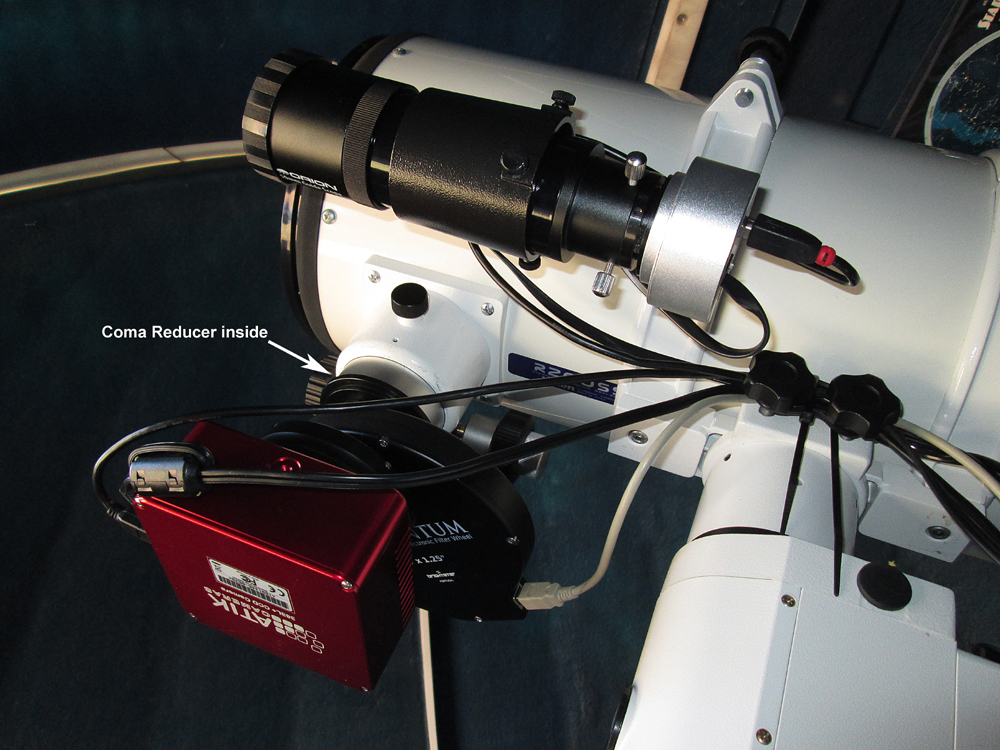Vixen R200SS 8 inch f/4 Newtonian Astrograph
|
|
This was bought in early 2014 specifically for imaging purposes using the Atik 383L+ mono CCD camera.
It is a superbly built 'scope with excellent optics. The rack-and-pinion focuser is so good that no additional after-market replacement is needed. The focuser has a 10 : 1 reduction knob which is silky smooth in motion. There is a locking knob but experience shows that it is probably not needed as once set the focuser remains in place without locking even when a filter wheel and camera are attached. The comparatively small size of this 'scope was chosen because the original intention was to be able to take easily portable equipment into the field at dark-sky sites. Not having any experience of CCD camera imaging and exposures longer than I had been used to with the video camera I had assumed that my home site would be too light-polluted for serious imaging. However, subsequent tests showed that not to be the case and so this 'scope is now permanently mounted in the observatory at home. Being an f/4 system proper collimation is particularly essential for good imaging results. After centre-spotting the primary mirror and making sure that the secondary mirror is precisely located behind the focusser as per Vixen's instructions collimation is now easily achieved using the Hotech laser collimator. The f/4 system also requires the use of a coma corrector. You may notice that the telescope tube is rotated in its mounting rings so that the CCD camera is slung underneath the telescope tube. In this position.the optical axis of the focuser tube and the CCD camera lines up with the Declination axis counterweight shaft. There are two reasons for this :
|

